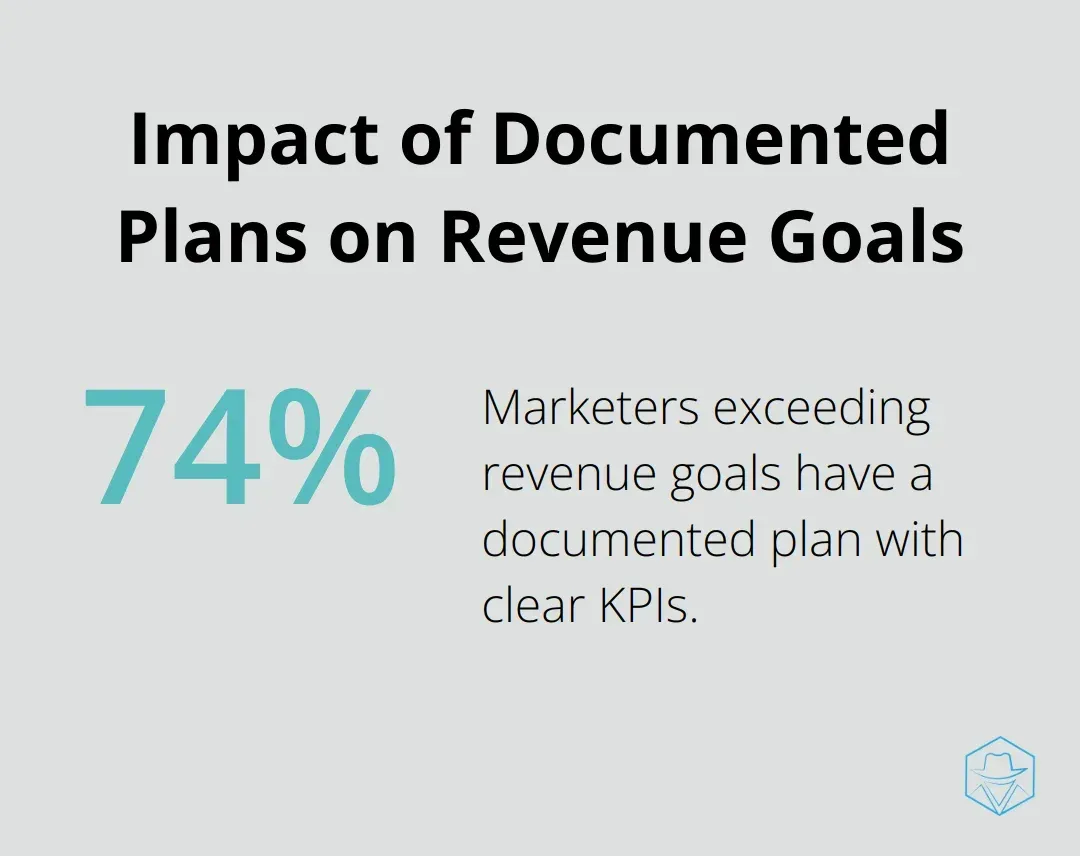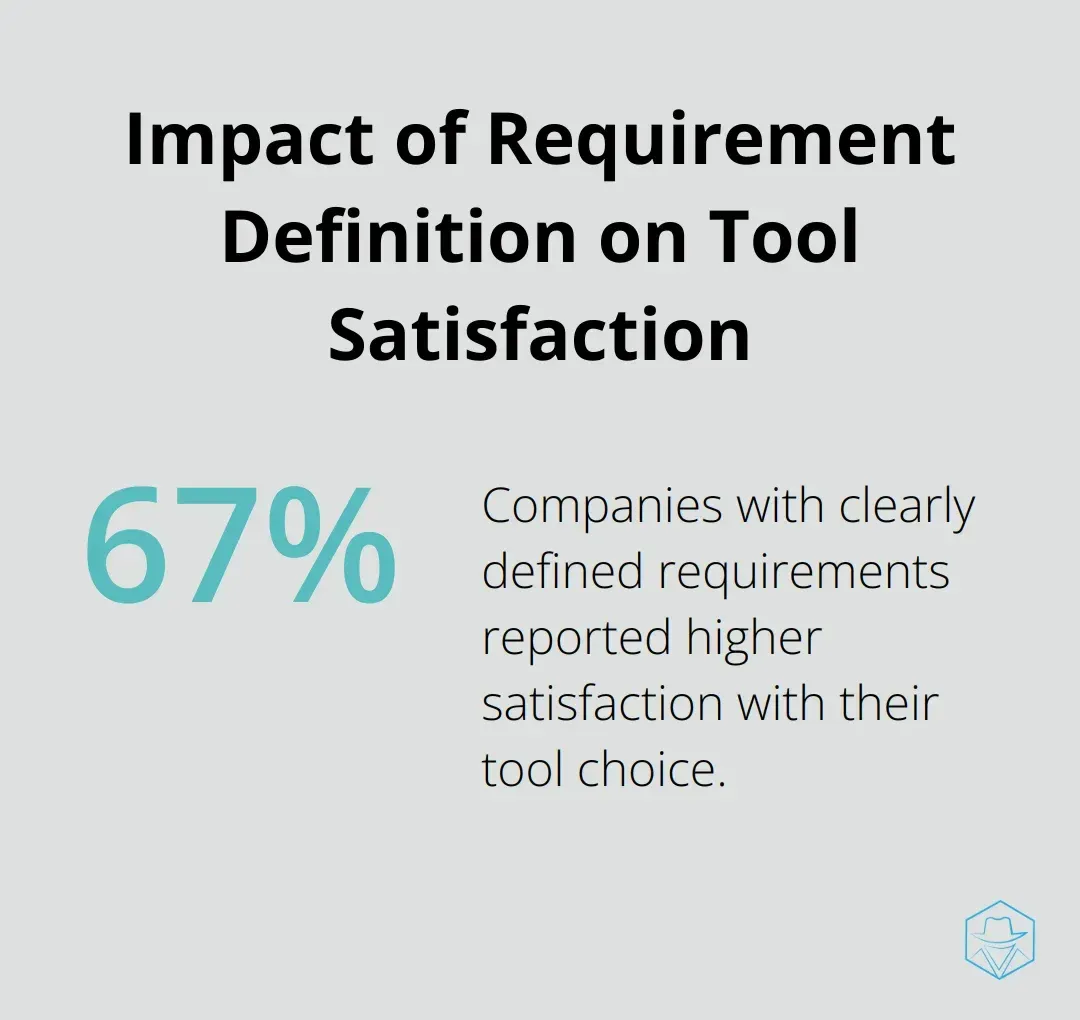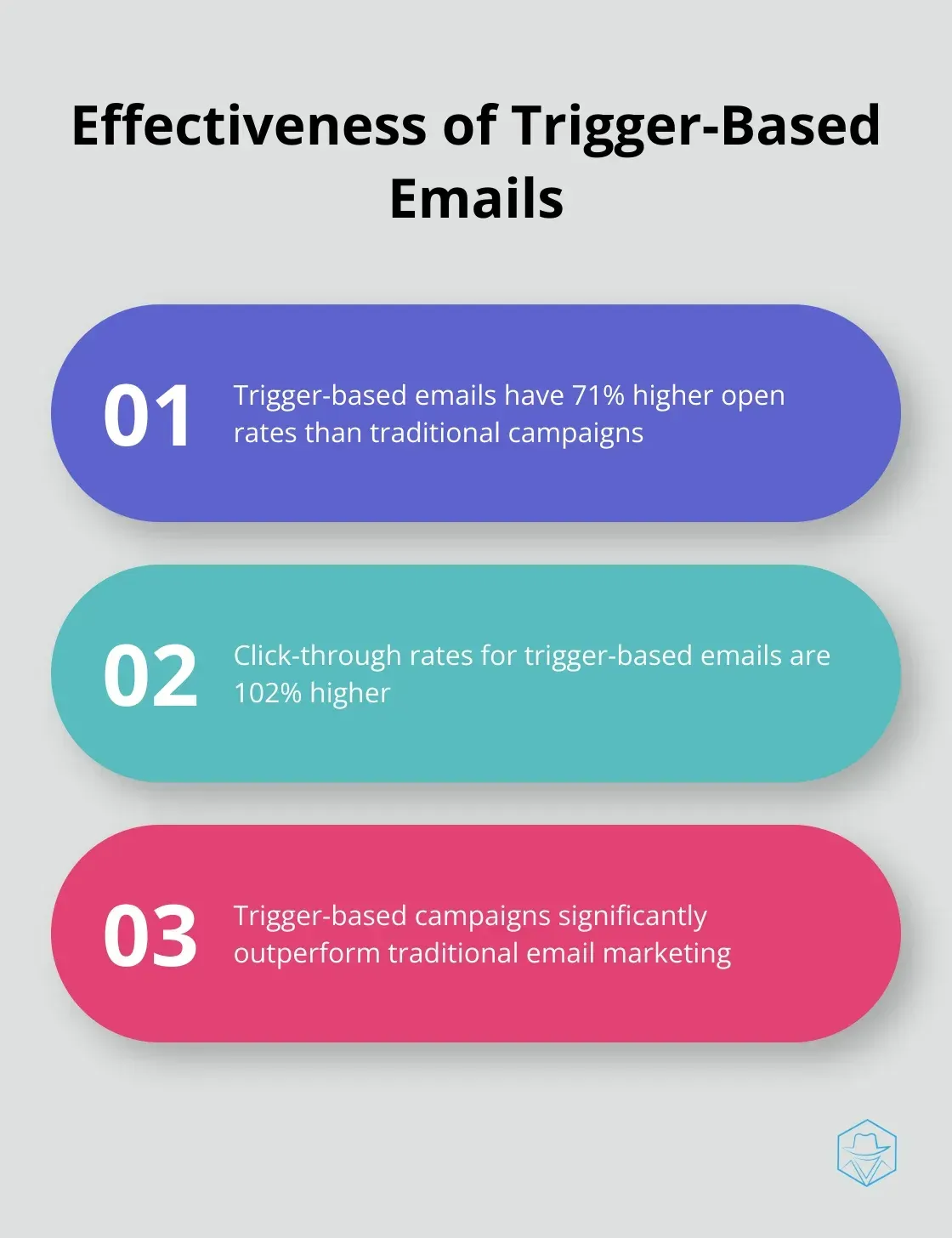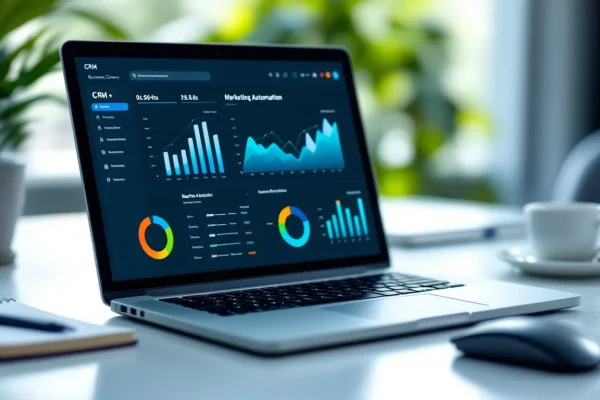How to Set Up Marketing Automation for Success

Marketing automation has become a game-changer for businesses looking to streamline their processes and boost efficiency. At Drop Cowboy, we’ve seen firsthand how powerful this tool can be when implemented correctly.
In this guide, we’ll walk you through how to set up marketing automation for maximum impact. Get ready to transform your marketing efforts and drive better results for your business.
What Are Your Marketing Automation Goals?
Pinpoint Your Business Objectives
Setting clear goals forms the foundation of successful marketing automation. You must identify what you want to achieve. Do you aim to increase lead generation, improve customer retention, or boost sales? Specificity matters. For example, if lead generation is your focus, set a target to increase qualified leads by 25% in the next quarter. Make your goals specific and realistic.
Choose Measurable KPIs
After establishing your objectives, select key performance indicators (KPIs) to track progress. A study by Forrester Research shows that 74% of marketers who exceed revenue goals have a documented plan with clear KPIs.

Relevant KPIs for marketing automation include:
- Conversion rates
- Email open and click-through rates
- Lead quality score
- Customer lifetime value
- Return on investment (ROI)
Monitor these metrics regularly to assess the effectiveness of your automation efforts and make data-driven decisions.
Sync With Your Overall Marketing Strategy
Your marketing automation goals should align seamlessly with your broader marketing plan. This alignment ensures that your automated campaigns complement other marketing initiatives and contribute to overarching business objectives.
For instance, if your marketing strategy focuses on expanding into new markets, your automation goals might include increasing engagement with content tailored to those specific regions. HubSpot reports that businesses with aligned sales and marketing teams are 67% better at closing deals (a statistic worth noting).
Set Realistic Timelines
Establish realistic timelines for achieving your marketing automation goals. Short-term goals (3-6 months) might focus on implementing basic automation workflows, while long-term goals (1-2 years) could involve more complex, multi-channel campaigns. Try to break down larger objectives into smaller, manageable milestones to track progress effectively.
Prioritize Goals Based on Impact
Not all goals carry equal weight. Prioritize your objectives based on their potential impact on your business. Consider factors such as revenue potential, resource requirements, and alignment with company-wide initiatives. This prioritization helps you focus your efforts on the most critical areas first.
Now that you’ve established clear goals for your marketing automation strategy, it’s time to explore the tools that will help you achieve these objectives. The next section will guide you through choosing the right marketing automation software for your specific needs.
Which Marketing Automation Tool Is Right for You?
Assess Your Specific Requirements
Start by listing your must-have features. Do you need advanced email marketing capabilities? Is social media integration essential for your business? A 2023 Gartner report reveals that 67% of companies who clearly defined their requirements before selecting a tool reported higher satisfaction with their choice.

Evaluate Integration Capabilities
Your marketing automation tool should complement your existing tech stack. Look for software that integrates seamlessly with your CRM, e-commerce platform, and other essential systems. A Forrester study found that businesses with well-integrated marketing tools experienced a 20% increase in marketing ROI.
Consider Scalability
Think long-term. Will the tool grow with your business? Scalability is key. A Capterra survey showed that 47% of businesses switched marketing automation platforms due to lack of scalability. Choose a solution that can handle your future needs to avoid this pitfall.
Prioritize User-Friendliness
Don’t underestimate the importance of an intuitive interface. A G2 report indicates that 78% of marketers cited ease of use as a top factor in their software selection. A user-friendly tool ensures faster adoption and more efficient use of the software’s features.
Budget Wisely
While cost shouldn’t be the only factor, it’s an important consideration. Look beyond the initial price tag. Consider factors like implementation costs, training, and potential ROI. Nucleus Research found that marketing automation delivers a 4.25x increase in productivity when implemented correctly.
Many providers offer free trials or demos. Take advantage of these opportunities to test the software in real-world scenarios. This hands-on experience can reveal whether the tool truly meets your needs or falls short in critical areas.
When evaluating options, consider platforms like Drop Cowboy. Our solution offers unique features such as Mimic AI™ for voice cloning and Smart Delivery™ for efficient global message delivery (which can significantly enhance your marketing automation efforts).
The right tool should align with your goals, integrate smoothly with your existing systems, and offer room for growth. This selection process is an investment that can pay dividends in improved marketing efficiency and effectiveness. Now that you’ve chosen your ideal marketing automation tool, it’s time to implement and optimize your automation workflows for maximum impact.
How to Implement Effective Automation Workflows
Map Your Customer’s Journey
Create a detailed map of your customer’s journey from initial awareness to post-purchase engagement. This map will serve as the blueprint for your automation strategy. A study by Aberdeen Group reveals that companies using customer journey mapping see a 54% greater return on their marketing investment.
A comprehensive customer journey map helps identify key touchpoints where automation can make the biggest impact. For instance, you might discover that many potential customers leave after visiting your pricing page. This insight could prompt you to set up an automated email sequence targeting these visitors with additional information or a special offer.
Craft Targeted Content for Each Stage
After mapping the journey, create content that speaks directly to customers at each stage. Personalization plays a crucial role here. A report by Epsilon found that 80% of consumers are more likely to make a purchase when brands offer personalized experiences.
For the awareness stage, create blog posts or social media content that addresses common pain points in your industry. As leads progress down the funnel, your content should become more specific to your product or service. Case studies or product comparison guides work well for consideration stage leads.
Set Up Trigger-Based Campaigns
Trigger-based campaigns form the core of effective marketing automation. These campaigns automatically send targeted messages based on specific customer actions or behaviors. A study by Blueshift shows that trigger-based emails have a 71% higher open rate and 102% higher click-through rate compared to traditional email campaigns.

You could set up a campaign that sends a personalized voicemail message to leads who’ve downloaded a whitepaper but haven’t scheduled a demo within a week. This timely, relevant outreach can significantly boost conversion rates.
Test, Measure, and Refine
Your work doesn’t end once your workflows go live. Continuous testing and refinement are essential for long-term success. A/B testing different elements of your campaigns can yield valuable insights. You might test different subject lines for your email campaigns or various call-to-action phrases in your SMS messages.
Review your KPIs regularly to measure the effectiveness of your workflows. Check if your open rates are increasing or if leads are moving through your funnel faster. Use these insights to make data-driven decisions about how to optimize your workflows.
Stay Agile and Adapt
The digital landscape evolves constantly, and so should your automation strategy. Prepare to adjust your workflows based on changing customer behaviors and market trends. This flexibility will ensure your automation efforts remain effective and continue to drive results for your business.
Final Thoughts
Setting up marketing automation for success requires careful planning and the right tools. You must define clear goals, select appropriate KPIs, and align your automation strategy with your overall marketing plan. The selection of a suitable marketing automation tool plays a vital role in this process.
Effective automation workflows involve mapping your customer’s journey and creating targeted content. You should set up trigger-based campaigns and continuously test, measure, and refine your strategies. The digital landscape changes rapidly, so you must adapt your approach as customer behaviors and market trends evolve.
Drop Cowboy can enhance your marketing automation efforts with features like Mimic AI™ for voice cloning. Take action today to improve your marketing efficiency. Start by assessing your current processes, identifying areas for automation, and implementing small-scale workflows.
blog-dropcowboy-com
Related posts

June 23, 2025
Boost Mobile Voicemail App: Everything You Need to Know
Discover features, tips, and benefits of the Boost Voicemail App. Simplify messaging and enhance communication with this essential mobile tool.

September 30, 2025
Can Mimic AI Replicate Human Emotion in Voice Messages?
Explore if AI voice emotions truly replicate human feelings in messages. Delve into tech advancements and limitations in emotive voice AI.

May 6, 2025
Best Marketing Automation CRMs for Your Business
Explore the best marketing automation CRMs to streamline operations and boost efficiency in your business with proven tools and strategies.

June 2, 2025
Speed Dialer: Boost Your Calling Efficiency
Enhance your calling efficiency with a speed dialer. Learn practical tips and data-driven insights to streamline your phone communication.

May 6, 2025
Marketing Automation Consulting: Expert Advice
Boost your strategy with expert marketing automation consulting. Discover effective tips and insights for optimizing your campaigns.

June 10, 2025
Trello: The Ultimate Software for Project Management
Explore Trello software for project management: boost efficiency, streamline tasks, and enhance team collaboration with unmatched features today.